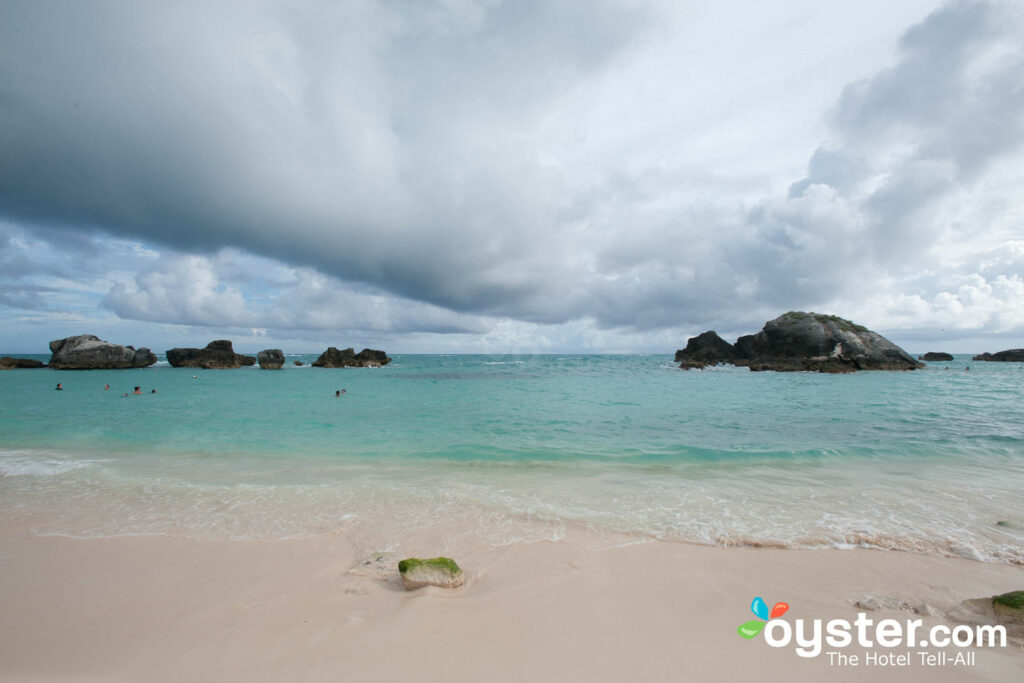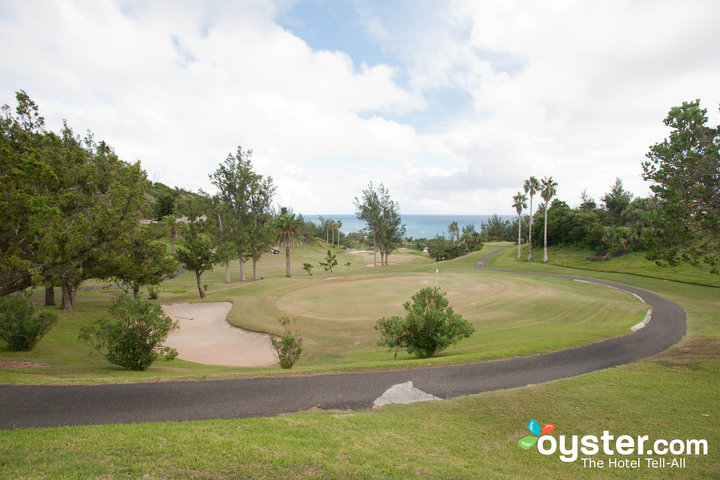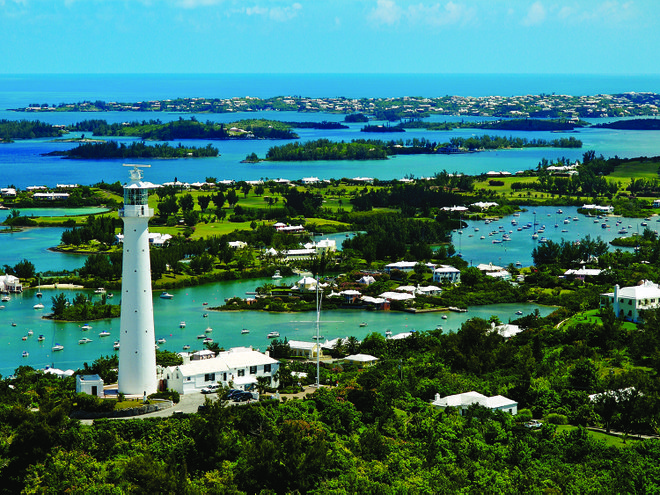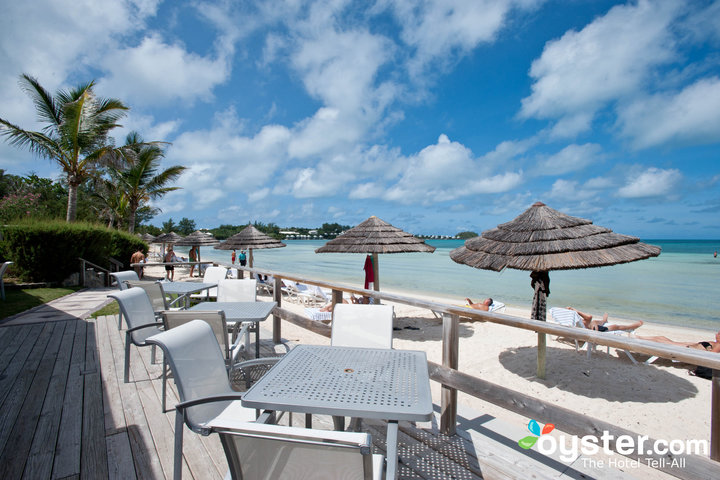
OK, OK, there's no bad time to go to Bermuda. The small nation (all 21 square miles of it) has no rainy season and no real winter. Still, depending on what you’re looking for and your budget, one time of year can make for a better vacation than the others.
Some who’ve never visited Bermuda may picture it somewhere in the Caribbean. In fact, it sits squarely in the Atlantic Ocean, about 650 miles east of North Carolina. And its prime position in the Gulf Stream is to thank for its reliably temperate weather. Yet being 1,000 miles north of the Bahamas, it doesn’t get hot in the way it does in the Caribbean. Temperatures range from about 60 to 85 degrees Fahrenheit all year long.
Continuous rain doesn’t happen often -- more commonly, it comes in short spurts -- but if you do experience all-day gray, you’ll still have plenty of options for fun. A day at the Bermuda Underwater Exploration Institute, where you can take a virtual 12,000-foot dive in a shark cage, is one idea. Another is touring the Crystal and Fantasy Caves, and afterward holing up in the nearby Swizzle Inn, a pub famous for inventing the Rum Swizzle. Or visit the Bermuda Perfumery, which has a cool relic. In 1864, the Mary Celestia, a civil war ship, sank off the coast. It wasn’t until 2011 that divers found a hidden compartment with bottles of perfume from Piesse and Lubin, an elite London fragrance house at the time. These 150-year-old bottles of perfume can be seen (and even sniffed!) here. Another option is a tour of the Bermuda Rum Cake Company factory, where you can see the bakers using the local Gosling’s rum to create the sweet treats.
No matter when you go or what the weather is, though, you can count on enjoying Bermuda’s unique combination of a laid-back tropical vibe (no rental cars here) and British influences (afternoon tea and crumpets, anyone?). Here’s some help narrowing down the timing of your trip.
November – February

This would be winter, as it were, yet it rarely dips below 60 degrees Fahrenheit. So it’s too cold for swimming, but you’ll find plenty of other enticing things to do. And that goes double for golf fans. Bermuda was a long-time host of the PGA Grand Slam of Golf tour and its golf culture continues to lure lovers of the sport from all over the world. The weather this time of year is wonderful for a round of golf — not to mention, hotel rates and airfares are lower than during busier months. Plus, seniors and couples golf tournaments are held in February and the Ladies Pro-Am Golf Classic happens in March.
This is also an ideal time of year for hopping on a bicycle. The Fat Tire Massive Flying Colours Mountain Bike Race Series runs from November through March. The series consists of nine point races throughout the island, with the final standing based on the seven best results. Winter is also the height of the mountain biking season. Tip: Easy trails are on the west side of the island; more difficult ones, on the east.
Even if sports aren’t your thing, you’ll have plenty of choices. During the holiday season, consider signing on for the free Bermuda National Trust Christmas Walkabout around St. George’s. You’ll stop at the Ducking Stool for a historical reenactment of trials and St. Peter’s Church, Their Majesties Chappell. St. George’s is one of the earliest English settlements in the New World, a designated UNESCO World Heritage site.
And how about dancing with the Gombey? Dressed in colorful costumes and wearing tall, triangular hats topped with assorted plumage, the Gombey can be seen performing around Bermuda on Boxing Day (December 26) and New Year’s Day. The dance masquerade troupes represent a mix of cultures, with British military influence evident in the rhythm of the traditional snare drums.
Where to Stay:
March and April

Temperatures are now creeping up into the lovely low 70s, yet it’s still a relatively budget-friendly time as most will find it a bit too chilly for the beach. These are also the months when Bermuda typically gets the least amount of rain. The Bermuda Open Volleyball Tournament is held each April; spring is also an exceptionally good time for hiking. The Railway Trail is an easygoing and scenic hiking path that’s built alongside the train tracks that were left behind from the days when trains traversed the island.
Another great way to get some active fun is to climb the 185 steps of the Gibbs Hill Lighthouse. The lighthouse, which sits atop a green slope of land in a pretty residential neighborhood, was one of the first in the world to be made of cast iron.
Touring the African Diaspora Heritage Trail is another interesting way to experience Bermuda’s history. The trail educates visitors on Bermuda’s role in the slave trade, with the goal of preserving the heritage and culture of the African Diaspora (the communities around the world that have come about from the movement of peoples out of Africa). All of the many sites along the trail, including dozens of monuments and museums, are officially designated as the UNESCO Slave Route Project. You’ll want to tackle the trail by geography. Two of the sites on the east end of the trail, for instance, include the Lost at Sea Memorial (many slaves worked and lived on boats as fishermen, whalers, and pilots; some never returned) and Pilot Darrell’s Square, the site of the home of James Darrel, the first documented Bermudian freed from slavery and an exceptional ship’s pilot.
If you’re in Bermuda on Easter Sunday, head out to Horseshoe Bay to see the flying of colorful homemade kites, an island tradition.
Where to Stay:
May – October

Ah, summer in Bermuda. Its charms are plentiful — as are the visitors. Demand, and thus rates, are high during this time, so you’ll need to book months in advance. The weather, typically in the low to mid 80s, is perfect to soak in the sun on the famous pink-sand beaches. June, July, and August are the most popular — and expensive — months, and the first half of May is a bit cooler and often a bit cheaper. Even though high season here is also hurricane season, Bermuda has much lower risk of hurricanes than most of the Caribbean islands, thanks in part to the protective reefs surrounding it.
Bermuda’s beaches get their signature hue from their composition of super finely ground shells, coral, and tiny red organisms that are plentiful on the surrounding reefs. Those reefs also offer incredible snorkeling opportunities. They not only protect the island, but have proven challenging to ships throughout history. That’s why there are about 300 shipwrecks in the surrounding waters. Two of them, the Constellation and the Montana, lie just a half-hour offshore and only 15 to 20 feet below the surface. The sites are popular among snorkelers.
Summer is also prime time for fishing. Both the Billfish Release Cup and Billfish Blast usually happen in July. Billfish are a type of large, predatory fish that can be as long as 13 feet or more. The popular Beach Tennis Tournament typically happens in August or September. It’s an International Tennis Federation event that draws players from around the globe. Many tennis fans enjoy taking in a match from a beach chair.
It’s no secret that Bermudians love their cricket, too. Take in a sport you likely don’t see much of at home at the Cup Match, the annual cricket classic between island rivals St. George’s and Somerset. The event traditionally takes place in July or August.
Where to Stay:
NOW WATCH: 5 Best Things to Do in Bermuda
https://www.youtube.com/watch?v=djYucMQbRb0
Related Stories:
- A Complete Guide on When to Go to Disney World
- 8 Grottos You Have to See to Believe
- Best Beaches in Bermuda
All products are independently selected by our writers and editors. If you buy something through our links, Oyster may earn an affiliate commission.



